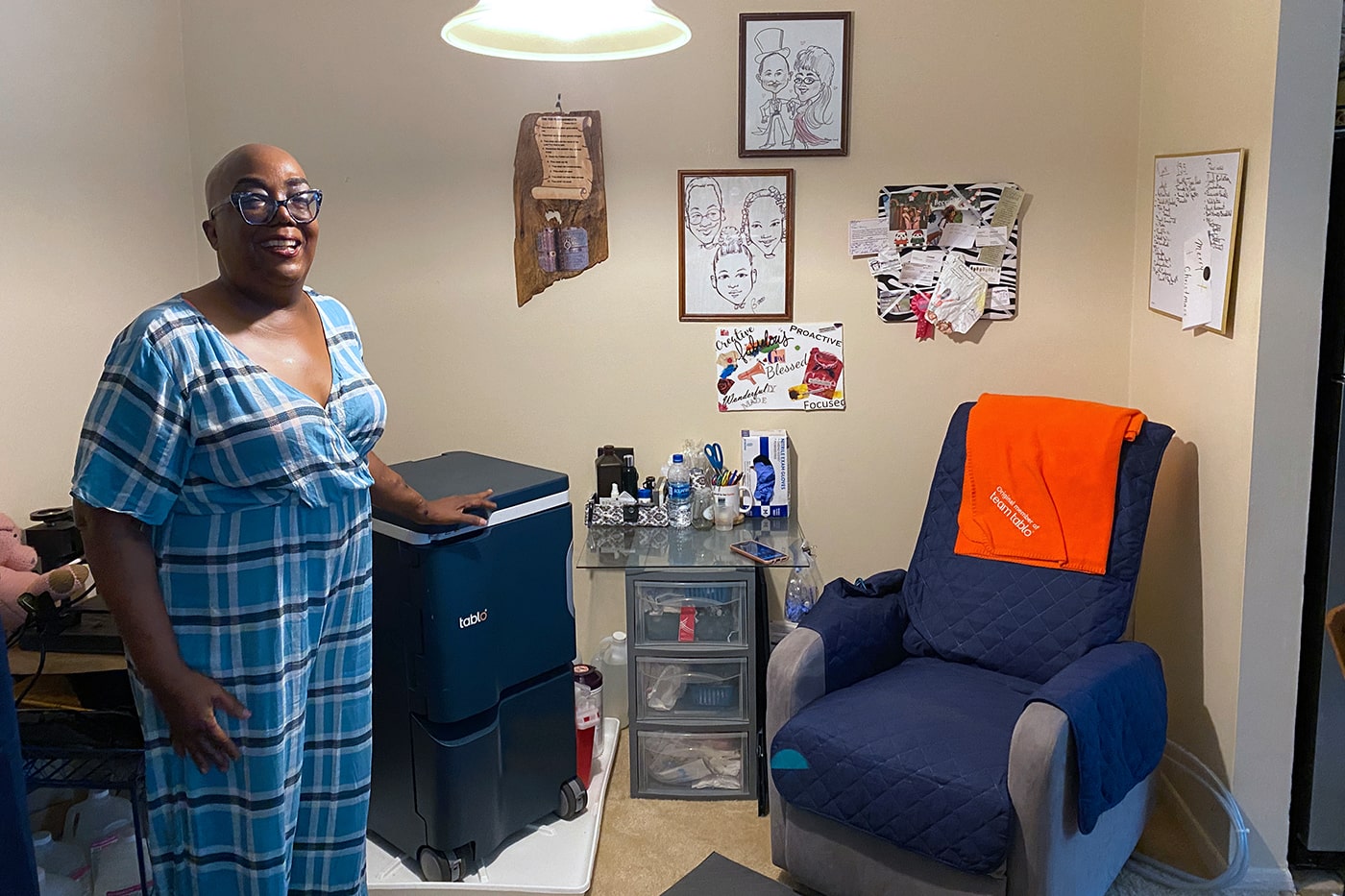The Future of Dialysis Treatments is Here and at Home with Tablo
By: Tonya Saffer, MPH
Head Of Government Affairs & Market Access

Summary
Tablo Hemodialysis System has received the first-ever TPNIES approval from CMS, as a substantial clinical improvement over existing other home hemodialysis technology. Here’s how this new policy impacts dialysis providers and what to do next.
What Was Approved?
On October 29, Outset Medical and its Tablo Hemodialysis System received the first-ever approval for a Transitional Add-on Payment Adjustment for New and Innovative Equipment and Supplies (TPNIES), after the Centers for Medicare & Medicaid Services (CMS) deemed Tablo to be a substantial clinical improvement over existing other home hemodialysis technology (see the final rule here).
The intent of the TPNIES, as established in 42 CFR 413.236, is to facilitate beneficiary access to certain qualifying, new, and innovative renal dialysis equipment and supplies by providing an add-on payment adjustment to support ESRD facilities in the uptake of new and innovative equipment and supplies under the ESRD PPS. As part of the TPNIES approval, healthcare providers will have access to supplemental reimbursement over the next two years to support their patients’ use of Tablo at home.
The TPNIES approval was made after a comprehensive review of the system’s technology, as well as an open public comment period where nearly 200 comments supportive of Tablo as a significant innovative improvement over the existing technology were shared by healthcare providers, clinicians, and patients. Outset Medical submitted evidence to CMS outlining how Tablo improves clinical outcomes in three key areas:
1. Tablo is the only device with the broad flexibility to achieve optimal dialysis outcomes at the frequency and duration decided on by the patient and clinician.
2. Patients treating on Tablo are more likely to complete their treatments and remain on home therapy.
3. Patients prefer Tablo for home hemodialysis and experience a greater quality of life, with less fatigue and less time spent on dialysis-related tasks.
CMS agreed with Outset and the public that Tablo met the criteria for improving clinical outcomes with its decision to approve it for TPNIES when used by patients at home. With this decision, as well as the decision to raise the bar every 18 months on the rate of home dialysis and people listed on the transplant waitlist under the ESRD Treatment Choices model, CMS continues to show its commitment to increasing the number of options patients have beyond in-center dialysis.
How Will the TPNIES Payment Work?
Beginning January 1, 2022, through December 31, 2023, dialysis facilities that send patients home with Tablo will qualify for additional reimbursement through Medicare Part B. The Medicare Administrative Contractors (MACs) will be directed by CMS to apply the additional payment to each home dialysis treatment when a single machine is used for one patient.
CMS has created a basic formula for the MACs to calculate a price for Tablo relying on invoice pricing. CMS will pay 65% of that equipment price for a duration of two years minus an offset that accounts for dialysis equipment assumed to be included in the single treatment bundled payment.
TPNIES = Price of the machine/5 useful life years = $X/156 treatments per year = $Y x 0.65 = $Z-$9.50
The MACs, on behalf of CMS, will establish prices for new and innovative renal dialysis equipment and supplies that meet the TPNIES eligibility criteria using verifiable information from the following sources of information if available:
1. The invoice amount, facility charges for the item, discounts, allowances and rebates;
2. The price established for the item by other MACs and the sources of information used to establish that price;
3. Payment amounts determined by other payers and the information used to establish those payment amounts; and
4. Charges and payment amounts required for other equipment and supplies that may be comparable or otherwise relevant.
Never before have the financial incentives been so aligned for innovators to disrupt the current model of end-stage kidney disease care and build their programs around a patient-centered approach of home first, when transplant can’t readily be obtained, and dialysis becomes necessary. With the government, patients, providers and physicians all aligned that Tablo at home is a recognized improvement in care, the future has arrived.
How to Access the Supplemental Reimbursement
If your dialysis facility and health system want to join this revolution in kidney care, contact Outset Medical by submitting the form here to get connected to a local representative in your area. We’d be happy to guide you through the process so that your organization can access the supplemental reimbursement to support your patients’ use of Tablo at home.


